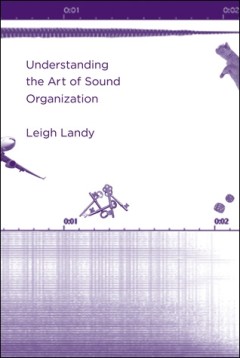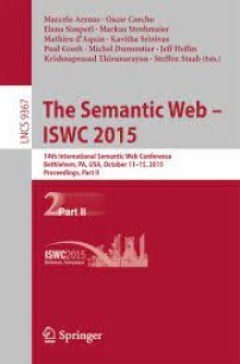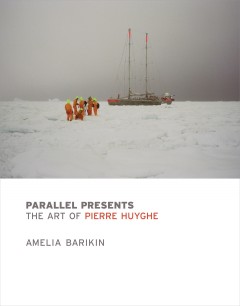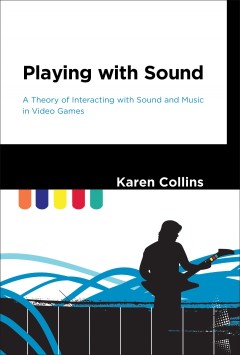Filter by

Understanding the Art of Sound Organization
The first work to propose a comprehensive musicological framework to study sound-based music, a rapidly developing body of work that includes electroacoustic art music, turntable composition, and acoustic and digital sound installations. The art of sound organization, also known as electroacoustic music, uses sounds not available to traditional music making, including prerecorded, synthesize…
- Edition
- -
- ISBN/ISSN
- 9780262277914
- Collation
- -
- Series Title
- -
- Call Number
- -

The Semantic Web. Latest Advances and New Domains
This book constitutes the refereed proceedings of the 12th Extended Semantic Web Conference, ESWC 2014, held in Anissaras, Portoroz, Slovenia, in May/June 2015. The 43 revised full papers presented together with three invited talks were carefully reviewed and selected from 164 submissions. This program was completed by a demonstration and poster session, in which researchers had the chance to p…
- Edition
- -
- ISBN/ISSN
- 978-3-319-18818-8
- Collation
- -
- Series Title
- -
- Call Number
- -

Entangled: Technology and the Transformation of Performance
How technologies, from the mechanical to the computational, have transformed artistic performance practices. This ambitious and comprehensive book explores technology's influence on artistic performance practices in the twentieth and twenty-first centuries. In Entangled, Chris Salter shows that technologies, from the mechanical to the computational—from a “ballet of objects and lights”…
- Edition
- -
- ISBN/ISSN
- 9780262315104
- Collation
- -
- Series Title
- -
- Call Number
- -

The Cosmetic Gaze: Body Modification and the Construction of Beauty
How the act of looking at our own and others' bodies is informed by the techniques, expectations, and strategies of body modification. If the gaze can be understood to mark the disjuncture between how we see ourselves and how we want to be seen by others, the cosmetic gaze—in Bernadette Wegenstein's groundbreaking formulation—is one through which the act of looking at our bodies and thos…
- Edition
- -
- ISBN/ISSN
- 9780262301114
- Collation
- -
- Series Title
- -
- Call Number
- -

Semblance and Event: Activist Philosophy and the Occurrent Arts
An investigation of the “occurrent arts” through the concepts of the “semblance” and “lived abstraction.” Events are always passing; to experience an event is to experience the passing. But how do we perceive an experience that encompasses the just-was and the is-about-to-be as much as what is actually present? In Semblance and Event, Brian Massumi, drawing on the work of William…
- Edition
- -
- ISBN/ISSN
- 9780262298193
- Collation
- -
- Series Title
- -
- Call Number
- -

Parallel Presents: The Art of Pierre Huyghe
The first book-length art historical examination of a major contemporary French artist. Over the past two decades, French artist Pierre Huyghe has produced an extraordinary body of work in constant dialogue with temporality. Investigating the possibility of a hypothetical mode of timekeeping—“parallel presents”—Huyghe has researched the architecture of the incomplete, directed a pupp…
- Edition
- -
- ISBN/ISSN
- 9780262315326
- Collation
- -
- Series Title
- -
- Call Number
- -

Moving without a Body: Digital Philosophy and Choreographic Thoughts
A radically empirical exploration of movement and technology and the transformations of choreography in a digital realm. Digital technologies offer the possibility of capturing, storing, and manipulating movement, abstracting it from the body and transforming it into numerical information. In Moving without a Body, Stamatia Portanova considers what really happens when the physicality of move…
- Edition
- -
- ISBN/ISSN
- 9780262313858
- Collation
- -
- Series Title
- -
- Call Number
- -

Illusions in Motion: Media Archaeology of the Moving Panorama and Related Spe…
Tracing the cultural, material, and discursive history of an early manifestation of media culture in the making. Beginning in the late eighteenth century, huge circular panoramas presented their audiences with resplendent representations that ranged from historic battles to exotic locations. Such panoramas were immersive but static. There were other panoramas that moved—hundreds, and proba…
- Edition
- -
- ISBN/ISSN
- 9780262313094
- Collation
- -
- Series Title
- -
- Call Number
- -

No Medium
Close readings of ostensibly “blank” works—from unprinted pages to silent music—that point to a new understanding of media. In No Medium, Craig Dworkin looks at works that are blank, erased, clear, or silent, writing critically and substantively about works for which there would seem to be not only nothing to see but nothing to say. Examined closely, these ostensibly contentless work…
- Edition
- -
- ISBN/ISSN
- 9780262312707
- Collation
- -
- Series Title
- -
- Call Number
- -

Playing with Sound: A Theory of Interacting with Sound and Music in Video Games
An examination of the player's experience of sound in video games and the many ways that players interact with the sonic elements in games. In Playing with Sound, Karen Collins examines video game sound from the player's perspective. She explores the many ways that players interact with a game's sonic aspects—which include not only music but also sound effects, ambient sound, dialogue, and…
- Edition
- -
- ISBN/ISSN
- 9780262312295
- Collation
- -
- Series Title
- -
- Call Number
- -
 Computer Science, Information & General Works
Computer Science, Information & General Works  Philosophy & Psychology
Philosophy & Psychology  Religion
Religion  Social Sciences
Social Sciences  Language
Language  Pure Science
Pure Science  Applied Sciences
Applied Sciences  Art & Recreation
Art & Recreation  Literature
Literature  History & Geography
History & Geography